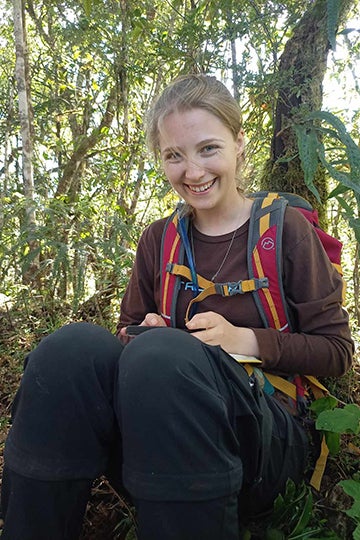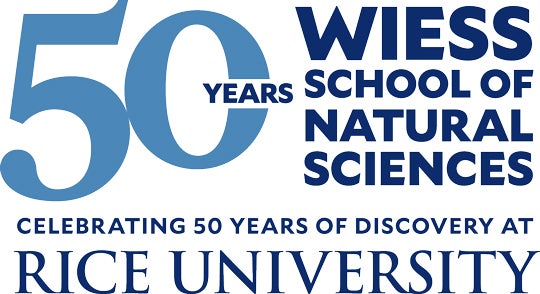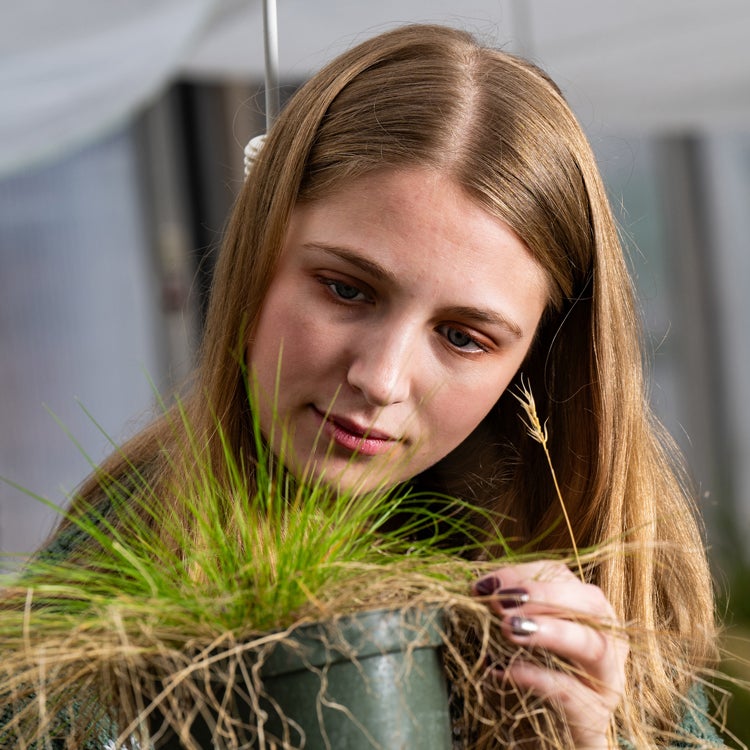
Bell Scherick’s journey into ecology and evolutionary biology began in an unexpected place: quarantine. As a middle and high school student, Bell battled an autoimmune disorder that required chemotherapy and long periods of isolation. “Nature was the one place I could safely be,” she reflected. “Having that outlet is what drew me to nature itself.” After reading Entangled Life by Merlin Sheldrake, Bell became intrigued by fungi and their interactions with plants. Her fascination deepened at Rice, where she found a research opportunity that aligned perfectly with her interests.
The week after orientation, Bell visited the biosciences website, looking for faculty studying plants or fungi. She found Tom Miller and reached out, hoping for a chance to visit the lab. To her surprise, the meeting ended with an offer: “At the end, he asked, ‘Should we get you started as a research assistant?’ I started that day and never left,” she said.
Bell’s research in the Miller group focuses on fungal endosymbionts — fungi that live inside plant hosts. Specifically, she studies grasses and their relationships with Epichloë fungus, which typically reproduces through the host plant’s seeds. This would seem to align their interests with the plant’s fitness. However, Bell’s findings tell a more nuanced story.
“People think symbionts have to be good, but they can be bad, good or neutral,” Bell explained. “And often these relationships are complex and highly context-dependent.” For example, housing an endophyte can be harmful during relatively stress-free years but can become beneficial under environmental stress, like drought.

Using data from a 16-year field study in Indiana, Bell examined how Epichloë fungi influence the lifespan and reproductive strategies of their host plants. While producing the seeds needed for Epichloë reproduction is costly for the host plant, she found that grasses with the fungi tend to live longer and, therefore, have more opportunities to reproduce.

“The idea of Epichloë being mutualistic or antagonistic is a very hot-button issue in the field,” Bell noted. “I think the full story is that they are not one thing or another, as things change over time. But in the grand scheme of things, they are probably net mutualists.”
This past summer, Bell joined Biosciences’ Amy Dunham for a field study in Madagascar. She studied parasitic mistletoe and its surprising effects on soil biodiversity. Mistletoe is typically seen as harmful, but Bell’s research revealed downstream benefits.
“While mistletoe steals resources from the tree, the tree drops leaves, and the leaves die and decompose, enriching the soil,” she said. “Mistletoe also attracts lemurs, which are the main seed dispersers in Madagascar.” Lemurs’ frequent visits to mistletoe-infested trees contribute to nutrient cycling in the surrounding soil. The result is greater invertebrate biodiversity around mistletoe-infested trees. Removing mistletoe immediately reduced this biodiversity, highlighting its unexpected ecological role.

Looking ahead, Bell plans to pursue graduate studies in ecology and conservation. Her goal is to use ecological research to help communities adapt to climate change, focusing on resilience in vulnerable regions. “I like the idea of working internationally, helping countries restore ecosystems after climate disasters and prepare for climate challenges,” she said.
Through her work, Bell hopes to show that ecological relationships are rarely simple — but their complexity holds the key to understanding and preserving the natural world.

